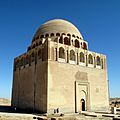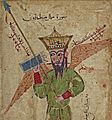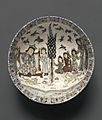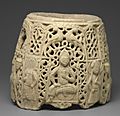Seljuk Empire facts for kids
Quick facts for kids
Seljuk Empire
آلِ سلجوق
Āl-e Saljuq |
|||||||||||||||||||||||||||||||||||||||||||||||
|---|---|---|---|---|---|---|---|---|---|---|---|---|---|---|---|---|---|---|---|---|---|---|---|---|---|---|---|---|---|---|---|---|---|---|---|---|---|---|---|---|---|---|---|---|---|---|---|
| 1037–1194 | |||||||||||||||||||||||||||||||||||||||||||||||

Seljuq Empire at its greatest extent in 1092,
upon the death of Malik Shah I |
|||||||||||||||||||||||||||||||||||||||||||||||
| Capital | |||||||||||||||||||||||||||||||||||||||||||||||
| Common languages | |||||||||||||||||||||||||||||||||||||||||||||||
| Religion | Sunni Islam (Hanafi) | ||||||||||||||||||||||||||||||||||||||||||||||
| Government | De facto: Independent Sultanate De jure: Under Caliphate |
||||||||||||||||||||||||||||||||||||||||||||||
| Caliph | |||||||||||||||||||||||||||||||||||||||||||||||
|
• 1031–1075
|
Al-Qa'im | ||||||||||||||||||||||||||||||||||||||||||||||
|
• 1180-1225
|
Al-Nasir | ||||||||||||||||||||||||||||||||||||||||||||||
| Sultan | |||||||||||||||||||||||||||||||||||||||||||||||
|
• 1037–1063
|
Toghrul I (first) | ||||||||||||||||||||||||||||||||||||||||||||||
|
• 1174–1194
|
Toghrul III (last) | ||||||||||||||||||||||||||||||||||||||||||||||
| History | |||||||||||||||||||||||||||||||||||||||||||||||
|
• Tughril formed the state system
|
1037 | ||||||||||||||||||||||||||||||||||||||||||||||
|
• Battle of Dandanaqan
|
1040 | ||||||||||||||||||||||||||||||||||||||||||||||
| 1071 | |||||||||||||||||||||||||||||||||||||||||||||||
| 1095–1099 | |||||||||||||||||||||||||||||||||||||||||||||||
|
• Battle of Qatwan
|
1141 | ||||||||||||||||||||||||||||||||||||||||||||||
|
• Replaced by the Khwarezmian Empire
|
1194 | ||||||||||||||||||||||||||||||||||||||||||||||
| Area | |||||||||||||||||||||||||||||||||||||||||||||||
| 1080 est. | 3,900,000 km2 (1,500,000 sq mi) | ||||||||||||||||||||||||||||||||||||||||||||||
|
|||||||||||||||||||||||||||||||||||||||||||||||
The Seljuk Empire was a powerful Sunni Muslim empire that existed during the Middle Ages. It was founded by a group of Oghuz Turks from the Qiniq tribe. At its largest, the Seljuk Empire stretched across a huge area. This included western Anatolia and the Levant in the west. It reached the Hindu Kush mountains in the east. In the south, it extended from Central Asia to the Persian Gulf.
The Seljuk Empire was started by two brothers, Tughril Beg (990–1063) and Chaghri Beg (989–1060), in 1037. They came from lands near the Aral Sea. First, they moved into Khorasan and then into Persia. Later, they conquered eastern Anatolia. A key moment was the battle of Manzikert in 1071. Here, the Seljuks took most of Anatolia from the Byzantine Empire. This event was one of the main reasons for the First Crusade (1095-1099). The Seljuk Empire began to decline around 1150. By 1260, it was invaded by the Mongols. The Mongols then divided Anatolia into smaller states called emirates. One of these, the Ottoman Empire, eventually grew to conquer the others.
The empire and its ruling family, the Seljuk dynasty, were named after Seljuk, an important leader. The Seljuks brought together many different parts of the eastern Islamic world. They also played a big role in the First and Second Crusades. The Seljuks adopted much of Persian culture and language. They helped spread this culture into Anatolia. Turkic tribes settled in the western parts of the empire. This was done to protect against invasions. Over time, these areas became more Turkic.
Contents
What Was the Seljuk Empire?
The Seljuk Empire was a large and important state. It was founded by the Seljuk family, who were Oghuz Turks. They created a powerful empire that lasted for many years. The empire was known for its strong military and its rich culture.
Where Was the Seljuk Empire Located?
The Seljuk Empire covered a vast region. It stretched across parts of Asia. This included modern-day Turkey, Iran, Iraq, Syria, and Central Asia. Its location made it a bridge between different cultures.
Who Were the Seljuk Leaders?
The Seljuk Empire was led by rulers called Sultans. The first Sultan was Tughril Beg. He was a very important leader who helped build the empire. Other famous Sultans included Malik Shah I, who ruled when the empire was at its largest. The last Sultan was Toghrul III.
How Did the Seljuks Govern Their Empire?
The Seljuks had a system of government that combined different traditions. They were Sunni Muslims and respected the Caliphate in Baghdad. However, the Sultans held the real power. They used a mix of Turkic and Persian ways to rule their lands.
Key Moments in Seljuk History
The Seljuk Empire had many important events. These shaped its growth and its eventual decline.
How Did the Seljuk Empire Begin?
The Seljuk Empire started in 1037. The Seljuk brothers, Tughril Beg and Chaghri Beg, led their people. They moved from Central Asia into the region of Khorasan. They won battles and gained control of more land.
The Battle of Dandanaqan (1040)
One of their first big victories was the Battle of Dandanaqan in 1040. In this battle, the Seljuks defeated the Ghaznavids. This win helped them establish their empire. It showed they were a new, strong power.
What Was the Battle of Manzikert?
The Battle of Manzikert happened in 1071. This was a very important battle for the Seljuks. They fought against the Byzantine Empire. The Seljuks won, which allowed them to take control of much of Anatolia. This area is now part of modern-day Turkey.
How Did the Seljuks Interact with the Crusades?
The Seljuk Empire played a big role in the Crusades. The Seljuks' expansion into Anatolia was one reason the First Crusade began in 1095. European Christians launched these wars to take back holy lands. The Seljuks were a major force they had to face.
When Did the Seljuk Empire Decline?
After a period of great power, the Seljuk Empire began to weaken. This happened around 1150. Different parts of the empire started to break away. New groups and local leaders gained more power.
The Battle of Qatwan (1141)
The Battle of Qatwan in 1141 was a significant defeat for the Seljuks. They lost to the Kara-Khanid Khanate. This battle showed that the empire was becoming less powerful.
The End of the Empire (1194)
The Seljuk Empire officially ended in 1194. It was replaced by the Khwarazmian Empire. Later, the Mongols invaded the region around 1260. They divided the Seljuk lands into smaller states.
Seljuk Culture and Legacy
The Seljuks left a lasting impact on the regions they ruled. They were known for their unique blend of cultures.
What Languages Were Spoken?
The Seljuk Empire was home to several languages. Persian was the official language of the court and for literature. It was also a common language for many people. Oghuz Turkic was spoken by the ruling family and the military. Arabic was important for religious studies and science.
What Was Seljuk Art Like?
Seljuk art was very beautiful and detailed. They built impressive mosques, schools, and tombs. Their art often featured geometric patterns, animal figures, and calligraphy. They were also skilled in making pottery and metalwork.
How Did the Seljuks Influence the Region?
The Seljuks helped to unite different parts of the Islamic world. They also spread Persian culture and traditions. Their rule led to the Turkicization of some areas, especially in Anatolia. This means that more Turkic people settled there and their language and customs became more common. The Seljuk legacy can still be seen in the architecture, art, and cultures of many countries today.
Images for kids
-
Head of male royal figure, 12–13th century, found in Iran.
-
Mausoleum of Sultan Sanjar in Merv, Turkmenistan.
-
Ruins of ancient Marv, one of the capitals of the Great Seljuk Empire
-
Bowl with an Enthronement Scene,12th-13th century, Brooklyn Museum
-
Seljuk-era art: Ewer from Herat, Afghanistan, dated 1180–1210CE. Brass worked in repousse and inlaid with silver and bitumen. British Museum.
-
Section of a Water Jug, Habb, 12th-13th century, Brooklyn Museum
-
Toghrol Tower, a 12th-century monument south of Tehran in Iran commemorating Tughril Beg.
-
The Kharāghān twin towers, built in 1053 in Iran, is the burial of Seljuk princes.
See also
 In Spanish: Imperio selyúcida para niños
In Spanish: Imperio selyúcida para niños




















